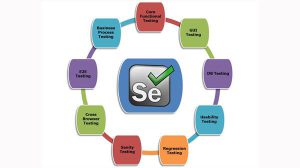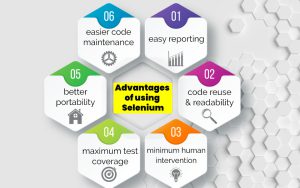Unlocking the Power of Selenium:
In the ever-evolving landscape of software testing, Selenium stands out as a powerful tool that empowers developers and quality assurance professionals to ensure the quality and reliability of web applications. In this comprehensive guide, we’ll explore Selenium, its core components, capabilities, advantages, and practical applications.
Understanding Selenium
Selenium is an open-source framework for automating web browsers. It allows testers to interact with web applications just as a human user would, performing tasks such as clicking buttons, filling forms, and navigating through web pages. Selenium supports multiple programming languages, including Java, Python, C#, and JavaScript, making it a versatile choice for test automation.
Key Components of Selenium
Selenium consists of several essential components that enable test automation:
- Selenium WebDriver: WebDriver is the core of Selenium. It provides a programming interface to interact with web browsers, allowing testers to automate user interactions. WebDriver supports various browsers like Chrome, Firefox, Safari, and Edge.
- Selenium IDE (Integrated Development Environment): Selenium IDE is a browser extension that facilitates the recording and playback of browser interactions. It’s an excellent tool for beginners to create test scripts without much coding.
- Selenium Grid: Selenium Grid allows the parallel execution of test cases on multiple machines and browsers, making it ideal for testing on various environments and configurations simultaneously.
- Selenium Client Libraries: Selenium provides client libraries in various programming languages. These libraries allow testers to write test scripts in their preferred language, making it accessible to a broader range of developers.
 Benefits of Selenium
Benefits of Selenium
Selenium offers a multitude of advantages that make it a popular choice for automated testing:
- Cross-Browser Compatibility: Selenium supports multiple browsers, allowing testers to ensure that web applications work consistently across different browser environments.
- Language Flexibility: Selenium’s support for multiple programming languages enables testers to work with the language they are most comfortable with.
- Parallel Testing: Selenium Grid facilitates parallel test execution, reducing the time required for comprehensive testing and accelerating the release cycle.
- Open Source: Being open source, Selenium is freely available, making it a cost-effective choice for organizations of all sizes.
- Active Community: Selenium boasts a large and active community of developers and testers who contribute to its growth and provide support through forums and online resources.
Practical Applications of Selenium
Selenium’s versatility and power find applications across various domains and industries:
- Web Application Testing: Selenium is primarily used for testing web applications. Testers can automate repetitive tasks, regression tests, and perform load testing to ensure web applications’ functionality and performance.
- E-commerce Testing: E-commerce websites require thorough testing to ensure smooth shopping experiences. Selenium helps automate product searches, checkout processes, and payment validations.
- Cross-Platform Testing: Selenium Grid allows testing on different operating systems and browsers, ensuring consistent functionality across platforms.
- Mobile Application Testing: Selenium can be extended for mobile app testing using tools like Appium. This enables comprehensive testing of both web and mobile applications.
- Performance Testing: Selenium can be integrated with performance testing tools like JMeter to assess an application’s performance under varying load conditions.
 Getting Started with Selenium
Getting Started with Selenium
If you’re eager to dive into the world of Selenium, here are some fundamental steps to kickstart your journey:
- Install Selenium: Depending on your preferred programming language, install Selenium WebDriver and the necessary libraries.
- Select a Programming Language: Choose a programming language that you are comfortable with or wish to learn. Selenium supports Java, Python, C#, and JavaScript, among others.
- Set Up a Development Environment: Configure your development environment with the chosen programming language and Selenium WebDriver.
- Learn Basic HTML and CSS: Understanding HTML and CSS is crucial as it helps identify web elements for test automation.
- Explore Selenium Documentation: Selenium provides comprehensive documentation, including tutorials and guides for various programming languages. Familiarize yourself with Selenium’s features and functions.
- Write Your First Test Script: Start with simple test cases and gradually build more complex scripts as you gain confidence and expertise.
Conclusion
Selenium has revolutionized the way software testing is performed, offering automation capabilities that enhance efficiency, accuracy, and reliability. Its open-source nature, extensive community support, and compatibility with multiple programming languages make it an indispensable tool for testers and developers alike. Whether you’re aiming to automate web application testing, cross-browser compatibility testing, or mobile application testing, Selenium equips you with the tools and flexibility to meet your quality assurance objectives. So, embrace Selenium, embark on your automation journey, and elevate the quality of your software with confidence and precision.

